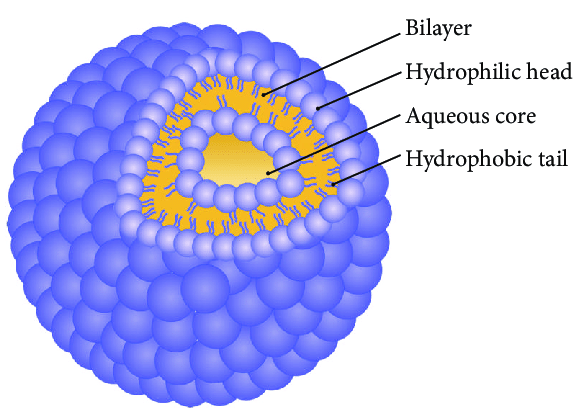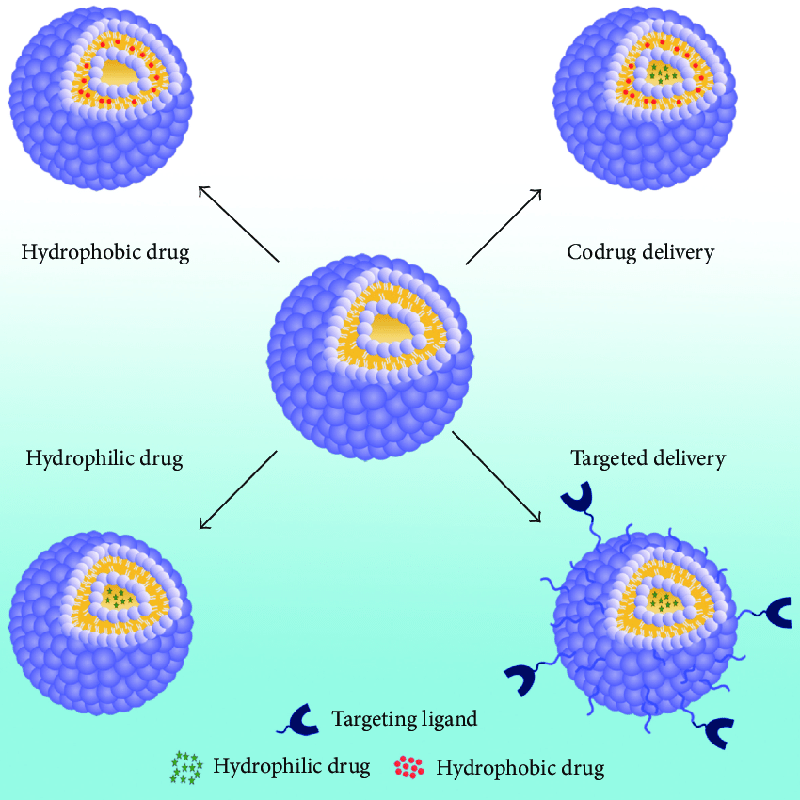Based on years of extensive experience in drug delivery system research and nanoparticular drug carriers development, Creative Biolabs has developed many newly vesicular systems, such as sphingosomes, niosomes, pharmacosomes, transferosomes, ethosomes and so forth. Here, drugs can be successfully delivered to specific site by using our own innovative niosomes. With the help of our professional scientists, Creative Biolabs can provide a full range of high-quality niosomes-related services for our global customers for anti-cancer drug delivery, targeted delivery, codrug delivery, antibiotics, anti-inflammatory drugs, antiviral drugs and so on.
Niosome is a nonionic surfactant-based liposome. Niosomes may be multilamellar or unilamellar depending on their method of preparation. The niosome is made up of a surfactant bilayer whose hydrophilic ends expose toward outside and inside of the vesicle, whereas the hydrophobic chains face each other within the bilayer. Method of niosomes preparation includes ether injection method, thin-film hydration technique, reverse-phase evaporation technique, and bubble method.
 Fig.1 Structure of niosomes.1,2
Fig.1 Structure of niosomes.1,2
Niosomes can be divided into three groups on the basis of their vesicles size:
| Type | Vesicle Size |
| Small Unilamellar Vesicles (SUV) | 0.025-0.05 µm |
| Multilamellar Vesicles (MLV) | >0.05 µm |
| Large Unilamellar Vesicles (LUV) | >0.10 µm |
Niosomes contain hydrophilic drugs within the enclosed space of vesicle, whereas hydrophobic drugs get embedded within the bilayer itself. It acts as drug depots in the body offering the drug release in a controlled manner through its bilayer thus providing sustained release of the enclosed drug. In recent years, niosomes have been extensively studied for their potential to serve as a carrier for the delivery of antigens, drugs, hormones and other bioactive agents. Niosomes also provide targeted drug delivery as it delivers the drug directly to that particular part of body, where the therapeutic effect is needed. Hence it minimizes the dose required to get administered to achieve the desired therapeutic effect.
 Fig.2 Niosomes in drug delivery.1,2
Fig.2 Niosomes in drug delivery.1,2
Aided by our well-established platforms and experienced scientists, we can provide comprehensive niosomes services, varying from lipid-based drug delivery characterization, delivery system construction services to in vitro efficacy validation, in vivo PK/PD validation. A wide spectrum of customized delivery products is available for your choice.
Niosomes are very promising carriers for the delivery of numerous pharmacological and diagnostic agents. They offer a great opportunity for loading hydrophilic, lipophilic drugs, or both drugs together. Equipped with extensive experience and professional experts, Creative Biolabs has gained extensive experience in the lipid-based drug delivery and now provides niosomes drug carrier with good characteristics. Besides, we also supply solutions tailored to our customers’ unique specifications. For more detail information, please feel free to contact us.
References
 For Research Use Only. Not For Clinical Use
For Research Use Only. Not For Clinical UseSupports
Online Inquiry

